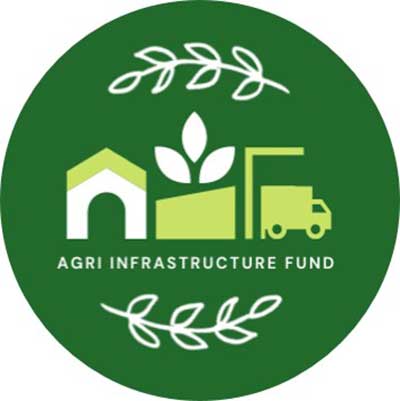GS-3 Agricultural produce, issues and related constraints
Key Phrases: Agriculture Infrastructure Fund (AIF), primary agri co-operative societies (PACS), supply chain management, atma nirbhar Bharat, NABARD, post harvest value addition
Why in News ?
- Disbursal of funds to strengthen agricultural infrastructure through setting up of warehouses and other projects under the ₹1-lakh crore Agriculture Infrastructure Fund (AIF) has been slow as primary agri co-operative societies (PACS) have been laggards in setting up the much-required infrastructure.
Issues concerning agriculture-infrastructure
- About 40% of primary produce like grains, fruits and vegetables is lost before it reaches the market, due to lack of proper handling, cleaning, sorting, grading and packaging facilities at the village level.
- The unreasonably long supply chain results in a steep increase in the total cost owing to procurement, transit and other taxes and service charges levied at various layers.
- Due to such inefficiencies in the supply chain, it has been estimated that the price received by the farmers is only in the range of 25-60% of what the consumer pays.
- Strengthening the supply chain can benefit the consumers and producers by 20-25% in cost reduction.
- According to one report, the food processing industry is expected to reach Rs 4,000 billion by 2015 contributing around 6.5% to the GDP.
About Agriculture Infrastructure Fund (AIF)
- The fund has been launched as part of ‘Atmanirbhar Bharat’ (self-reliant India) to make farmers self-reliant.
- It is a pan India Central Sector Scheme, under the scheme, Rs. One Lakh Crore will be provided by banks and financial institutions as loans.
- The AIF scheme shall provide a medium – long term debt financing facility for investment in viable projects for post-harvest management Infrastructure and community farming assets through interest subvention and financial support.
- Duration of the Scheme: FY2020 to FY2029 (10 years).
- Eligibility: Primary Agricultural Credit Societies (PACS), Marketing Cooperative Societies, Farmer producer organisations (FPOs), SHGs, Farmers, Joint Liability Groups (JLG), Multipurpose Cooperative Societies etc.
- Interest Subvention: All loans under this financing facility will have interest subvention of 3% per annum up to a limit of Rs. 2 crore. This subvention will be available for a maximum period of seven years.
- Credit guarantee: under Credit Guarantee Fund Trust for Micro and Small Enterprises (CGTMSE) scheme for a loan up to Rs. 2 crore.
- Management of Fund : Monitored through an advance online Management Information System (MIS) platform.
Issues in loan disbursal in Agriculture Infrastructure Fund (AIF)
- Disbursal is slow, under the ₹1-lakh crore Agriculture Infrastructure Fund (AIF) as primary agri co-operative societies (PACS) have been laggards in setting up the much-required infrastructure.
- Conditions stipulated by the PACS to disburse credit based on the physical progress of the projects is the reason for the poor progress with only 4 percent of the sanctioned amount disbursed.
Distinguish features of Agriculture Infrastructure Fund (AIF)
- National Bank for Agriculture and Rural Development (NABARD) is providing a refinance facility under AIF to co-operative banks at 4 percent interest, while the Centre is granting a further 3 per cent interest subvention to all beneficiaries of AIF, making the effective rate for PACS at just 1 percent.
- The seed money under AIF is 10 per cent to avail of the credit, any AIF beneficiary setting up a warehouse would get 25-33 per cent subsidy on capex after he deposits 20 percent seed money.
Way Forward
- The Indian agriculture supply chain is on the verge of a great transformation ― from one characterized by high wastage, low processing and low global contribution to one that is more streamlined, more integrated and more significant in the global trade.
- Continuous financial and regulatory support from government, increasing participation of private and public corporations, and increasing exposure of foreign players is likely to diversify investments in developing the infrastructure across the value chain right from farm inputs to the consumers.
- According to one report, Indian agriculture post harvest value addition industries requires about 5.3 lakh persons in the unorganized sector and about 1 lakh in the organized sector, for this AIF funds can diversify its portfolio for post harvest human resource development also as suggested by many Agriculture experts.
Source: The Hindu BL
Mains Question
Q. Huge post harvest food wastage, present a strong case to develop agriculture infrastructure in India at a rapid rate. Discuss how the Agriculture Infrastructure Fund can help in modernisation of agriculture infrastructure and development of an efficient post harvest supply chain. (15 marks)







